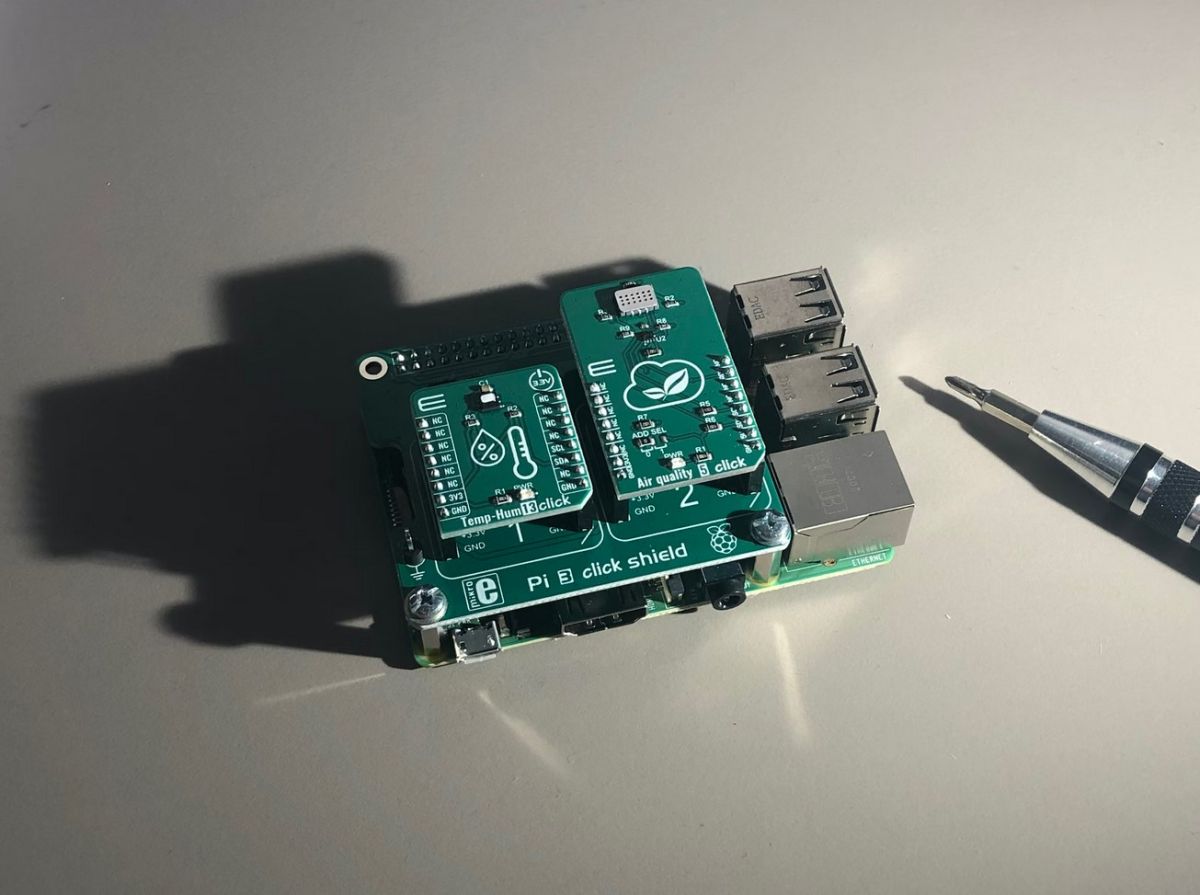 14 Mar, 2021
14 Mar, 2021
Nghề kĩ nghệ máy tính
Công nghệ thông tin (CNTT) là cái tên chung cho vài khu vực bao gồm Khoa học máy tính (CS), Kĩ nghệ phần mềm (SWE), Quản lí hệ thông tin (ISM) và Kĩ nghệ máy tính (CE). Khi các khu vực khác hướng theo phần mềm, Kĩ nghệ máy tính (CE) là tổ hợp của cả phần cứng và phần mềm. CE là nghiên cứu về phần cứng máy tính, đặc biệt phát triển, chế tạo và cài đặt phần cứng máy tính như chip máy tính, bo mạch, hệ thống máy tính, hệ thống mạng, thiết bị đa phương tiện, và các trang thiết bị liên quan như bàn phím, bộ định tuyến, máy phục vụ, và máy in.
Lĩnh vực này không nên bị lẫn lộn với Kĩ nghệ điện tử (EE) hội tụ vào qui mô lớn hơn của việc thiết kế các cấu phần điện tử. Kĩ nghệ máy tính (CE) thu hẹp vào chỉ các công việc liên quan tới máy tính và trang thiết bị máy tính. Lĩnh vực CE đang tiến bộ nhanh chóng trong những năm gần đây do nhu cầu cao trong thiết bị điện tử tiêu thụ như điện thoại thông minh, máy tính bảng, thiết bị y tế, hệ thống mạng cũng như tính toán mây.
Sinh viên CE học về thiết kế, lập kế hoạch, phát triển, kiểm thử và ngay cả giám sát chế tạo phần cứng máy tính, từ chip tới bộ điều khiển thiết bị, từ mạng máy tính tới việc truyền dữ liệu và đa phương tiện qua intranet và internet. Sinh viên học về giao diện giữa các thiết bị phần cứng; giữa phần cứng và phần mềm để đi tới những năng lực mới hay cải tiến hệ thống hiện có. Khu vực CE được dựa trên phần cứng điện tử như mạch tới chip nhưng cũng dựa trên hệ điều hành, kiến trúc hệ thống, và giao diện phần mềm. Kĩ sư máy tính phải hiểu thiết kế logic, thiết kế bộ vi xử lí, kiến trúc máy tính, giao tiếp máy tính, và hội tụ liên tục và yêu cầu và thiết kế hệ thống.
Theo Cục thống kê lao động Mĩ, lương khởi điểm cho người tốt nghiệp kĩ nghệ máy tính là $82,160 tới $92,000. Vì lĩnh vực này yêu cầu nhiều kinh nghiệm trong công nghiệp, CE cấp cao với năm năm kinh nghiệm có thể làm được $125,000 tới $145,000 và có thể đi lên cao hơn là người thiết kế chip, kĩ sư trong một số công ti bán dẫn và điện tử như Intel, Motorola, ARM hay Texas Instrument. Ngày nay đa số người trong CE hội tụ vào nền di động thay vì nền máy tính và có khác biệt trong trả lương cho các nhiệm vụ việc làm khác nhau, nhưng những biến thiên này được móc nối với kinh nghiệm. Chẳng hạn, kĩ sư có trách nhiệm quản lí kĩ thuật làm được nhiều nhất; tiếp đó là người trong thiết kế, nghiên cứu và chế tạo. Mức vào nghề hầu hết ở trong hỗ trợ, kiểm soát chất lượng và thực hiện hệ thống.
Sinh viên muốn theo đuổi bằng cấp chuyên sâu trong Kĩ nghệ máy tính có thể lựa vào khu vực chuyên môn như:
Thị giác máy tính: trong khu vực này sinh viên sẽ hội tụ vào giác quan nhìn, trong đó hình ảnh của khung cảnh được lấy làm cái vào và ước lượng các đặc trưng ba chiều của khung cảnh là cái ra. Sinh viên sẽ đề cập tới mô tả thị giác hiệu quả và trao đổi của môi trường, và thế rồi thông tin thu được được dùng để thực hiện các nhiệm vụ như dẫn đường và lắp ráp. Ứng dụng then chốt là cải tiến trao đổi hình ảnh, và giao diện người-máy tính, cũng như các thiết bị như camera chuyên dụng với cảm biến thị giác linh động. Người tốt nghiệp trong chuyên môn này thường làm việc cho công ti điện tử và phòng thí nghiệm nghiên cứu của chính phủ.
Thiết kế mạch tích hợp, tích hợp qui mô rất lớn (VLSI): trong chuyên môn này, sinh viên sẽ hội tụ vào việc nâng cao tốc độ, độ tin cậy, và hiệu quả năng lượng của mạch tích hợp qui mô rất lớn (VLSI) và vi hệ thống. Sinh viên học về qui trình thiết kế, thuật toán và kiến trúc VLSI, dung sai tiếng ồn, và bộ xử lí tín hiệu số thức, thiết kế mạch tích hợp trộn lẫn, hệ thống vi cơ điện cho các cấu phần tần số radio thụ động tích hợp, mô phỏng nhiệt điện và bảo vệ phóng tĩnh điện cho mạch CMOS chất cách điện trên bán dẫn (chất bán dẫn có bổ sung ô xít kim loại). Người tốt nghiệp trong chuyên môn này thường làm việc cho công nghiệp bán dẫn hay điện tử như Intel, National Semiconductor, ARM, Motorola v.v.
Xử lí tín hiệu, hình ảnh, và tiếng nói: Kĩ sư máy tính làm việc trong khu vực này hội tụ vào những cải tiến phát triển trong tương tác người-máy tính, nhận dạng và tổng hợp tiếng nói, lấy hình ảnh y học và khoa học, hay hệ thống truyền thông. Các nhiệm vụ thị giác máy tính như nhận diện khuôn mặt, khi được tổ hợp với cơ sở dữ liệu đa phương tiện và các lược đồ mới cho biểu diễn và nén, là các ví dụ về công việc trong khu vực này. Công việc trong kĩ nghệ tiếng nói và ngôn ngữ sẽ tìm kiếm để hiểu khả năng ngôn ngữ con người và phát triển hệ thống máy tính với khả năng có thể sánh được. Phương pháp chiếu động nhanh được tính toán MRI (Magnetic Resonance Imaging), hiển vi điện tử, xử lí laser các mỏ đại dương, và lấy hình ảnh radar thụ động từ máy bay bằng việc dùng tín hiệu radio và truyền hình là một số phần trong các hệ thống lấy hình ảnh hiện đang được phát triển. Các dự án xử lí tín hiệu có thể hội tụ vào các tiến bộ mới trong công nghệ trợ giúp việc nghe. Người tốt nghiệp trong chuyên môn này sẽ làm việc cho các công ti thiết bị y tế như Siemens, GE, Phillips và các phòng thí nghiệm nghiên cứu tư như Bell Labs v.v.
Truyền thông và mạng không dây: Khu vực chuyên môn này hội tụ vào miền rộng các chủ đề mà sẽ làm tiến bộ ở biên giới của hệ thống truyền thông và mạng không dây, điều chế và mã kiểm soát lỗi, và lí thuyết thông tin. Sinh viên làm việc trong khu vực này có thể thám hiểm các cơ hội truyền thông không dây để tận dụng ưu thế của các băng tần mới và tăng hiệu quả của băng tần hiện thời. Các khu vực tập trung khác là kĩ thuật thiết kế cho mạng tốc độ cao, chặn nhiễu và điều chế, thiết kế và phân tích hệ thống dung sai, và các lược đồ lưu giữ và truyền phát. Người tốt nghiệp trong chuyên môn này thường được các công ti viễn thông sử dụng.

Mạng máy tính, tính toán di động, và hệ thống phân bố: Sinh viên làm việc trong khu vực này sẽ xây dựng môi trường tích hợp cho tính toán, truyền thông, và truy nhập thông tin qua các công nghệ hỗn tạp. Sinh viên sẽ học về mạng không dây dùng chung kênh, quản lí tài nguyên thích ứng trong hệ phân bố động bao gồm các hệ thống di động, cải tiến chất lượng dịch vụ trong môi trường di động và ATM, nền cho tính toán thích ứng và bộ nhớ không ngừng qua mạng không dây hỗn tạp, và truyền thông tin cậy và hiệu quả trên cụm Ethernet. Người tốt nghiệp trong chuyên môn này thường làm việc cho các công ti viễn thông và trang thiết bị viễn thông như Cisco, Google v.v.

—-English version—-
Computer Engineering Career
Information Technology (IT) is the common name for several areas including Computer Science (CS), Software Engineering (SWE), Information System Management (ISM) and Computer Engineering (CE). When the other areas are software oriented, Computer Engineering (CE) is the combination of both hardware and software. CE is the study of computer hardware, especially the development, manufacturing, and installation of computer hardware such as computer chips, circuit boards, computer systems, network system, multimedia devices, and related equipment such as keyboards, routers, servers, and printers.
This field should not be confused with Electronics Engineering (EE) that focuses on the broader scale of design of electronic components. Computer Engineering (CE) is narrowing only on works relates to computers and computer equipments. The field of CE is rapid advancing in recent years due to the high demand in consumer electronic devices such as smart-phones, tablets, medical devices, network systems as well as Cloud Computing.
CE students learn about the design, planning, development, testing, and even the supervision of manufacturing of computer hardware, from chips to device controllers, from computer networks to the transmission of data and multimedia across the intranet and internet. Students study about the interface between different hardware devices; between hardware and software to come up with new capabilities or improving existing systems. The CE area is based in the electronic hardware such as circuits to chips but also on operating systems, system architecture, and software interface. Computer engineers must understand logic design, microprocessor design, computer architecture, computer interfacing, and continually focus on system requirements and design.
According the U.S. Bureau of Labor Statistics, the starting salary for Computer engineering graduates is $82,160 to $92,000. Because this field requires a lot of experiences in the industry, senior CE with five years can make $125,000 to $145,000 and could go higher as Chips Designer engineer in some semiconducting and electronics companies such as Intel, Motorola, ARM or Texas Instrument. Today a majority of CE focus is in mobile platforms instead of computer platforms and there is a difference in pay for different job duties, but these variations are linked to experience. For example, engineers whose responsibilities include technical management make the most; follow by people in designer, research and manufacturing. Entry level is mostly in support, quality control and systems implementation.
Students who want to pursue advanced degree in Computer Engineering could select several specialty areas such as:
Computer Vision: in this area student will focus on visual sensing, in which images of a scene are taken as input and estimates of the three-dimensional characteristics of the scene are output. Students will addresses efficient visual depiction and communication of the environment, and then the acquired information is used to perform tasks such as navigation and assembly. The key application is to improve image communication, and human-computer interfaces, as well as devices such as special-purpose cameras with versatile vision sensors. Graduates in this specialty often work for electronic company and government research laboratories.
Integrated Circuits, Very Large-Scale Integration (VLSI) Design In this specialty, students will focus on enhancing the speed, reliability, and energy efficiency of the Very Large-Scale Integration (VLSI) circuits and micro-systems. Students learn about the design process, VLSI algorithms and architectures, noise-tolerance, and digital signal processors, mixed-signal integrated circuit design, Micro Electro Mechanical Systems for integrated passive radio frequency components, electro-thermal simulation and electrostatic discharge protection for silicon-on-insulator CMOS (complementary metal-oxide-semiconductor) circuits. Graduates in this specialty often work for semiconducting or electronic industry such as Intel, National Semiconductor, ARM, Motorola etc.
Signal, Image, and Speech Processing Computer engineers working in this area focuses on developing improvements in human-computer interaction, speech recognition and synthesis, medical and scientific imaging, or communications systems. Computer vision tasks such as facial feature recognition, when combined with multimedia databases and novel schemes for representation and compression, are examples of work in this area. Work in speech and language engineering would seek to understand human language faculties and to develop computer systems with comparable faculties. Dynamic MRI (Magnetic Resonance Imaging) fast computed tomography, electron microscopy, laser imaging of ocean mines, and passive radar imaging of aircraft using radio and television signals are among the imaging systems currently being developed. Signal processing projects might focus on developing new advances in hearing aid technology. Graduates in this specialty will work for Medical devices companies such as Siemens, GE, Phillips and private research laboratories such as Bell Labs etc.
Communications and Wireless Networks This specialty area focuses on a broad range of topics that will advance the frontiers of communications systems and wireless networks, modulation and error-control coding, and information theory. Students working in this area may explore wireless communication opportunities to take advantage of new frequency bands and increase the efficiency of current bands. Other areas of focus are design techniques for high-speed networks, interference suppression and modulation, design and analysis of fault-tolerant systems, and storage and transmission schemes. Graduates in this specialty often are employed by telecommunication companies.
Computer Networks, Mobile Computing, and Distributed Systems Students working in this area would build integrated environments for computing, communications, and information access over heterogeneous technologies. Students will learn about shared-channel wireless networks, adaptive resource management in dynamic distributed systems including mobile systems, improving the quality of service in mobile and ATM environments, a platform for adaptive computing and seamless memory over heterogeneous wireless networks, and reliable and efficient communication on a fast Ethernet cluster. Graduates in this specialty often work for telecommunication companies and communication equipments such as Cisco, Google etc.




 Thông báo
Thông báo
















 Quay lại đăng nhập
Quay lại đăng nhập
